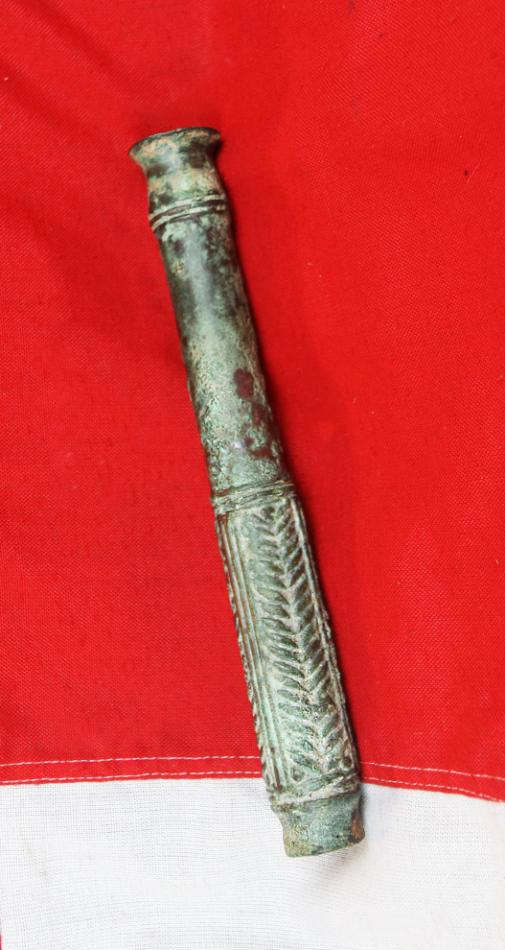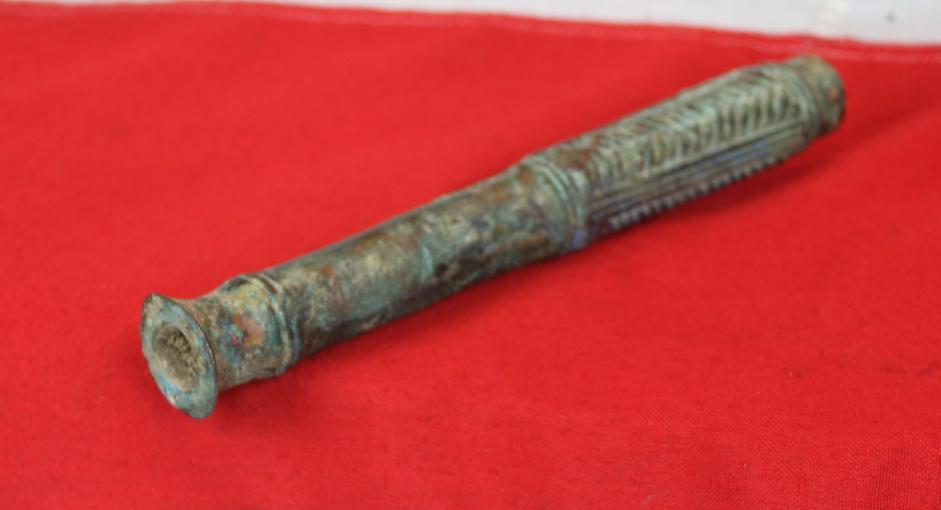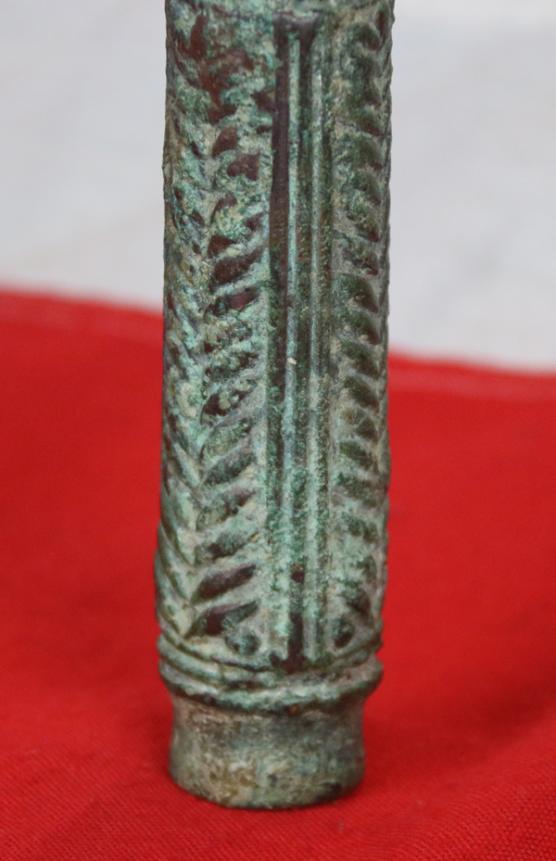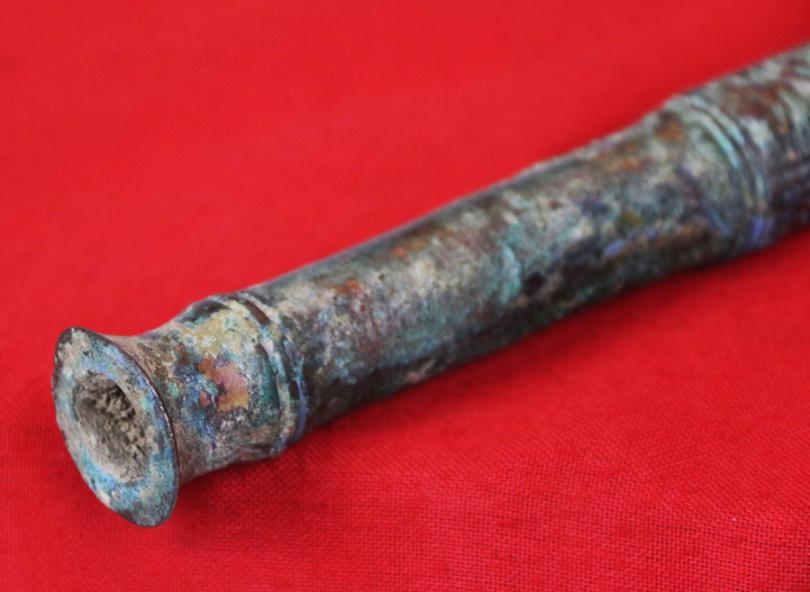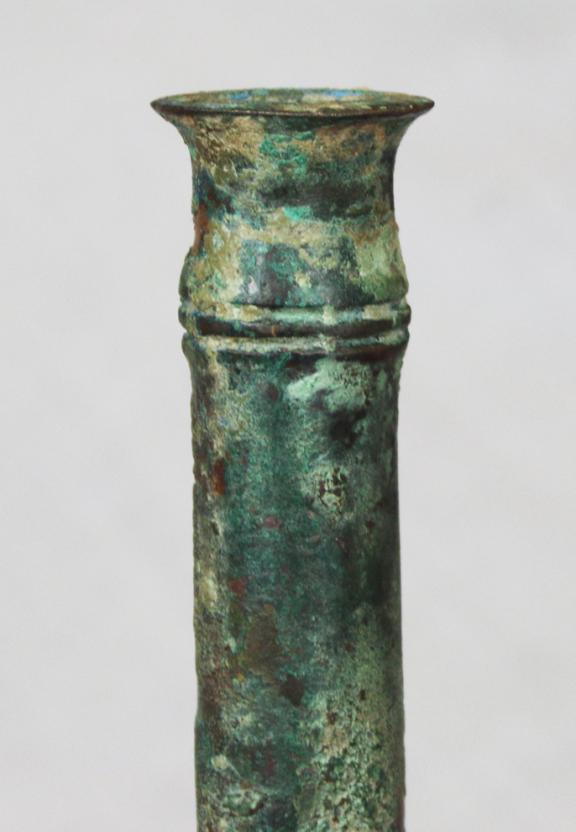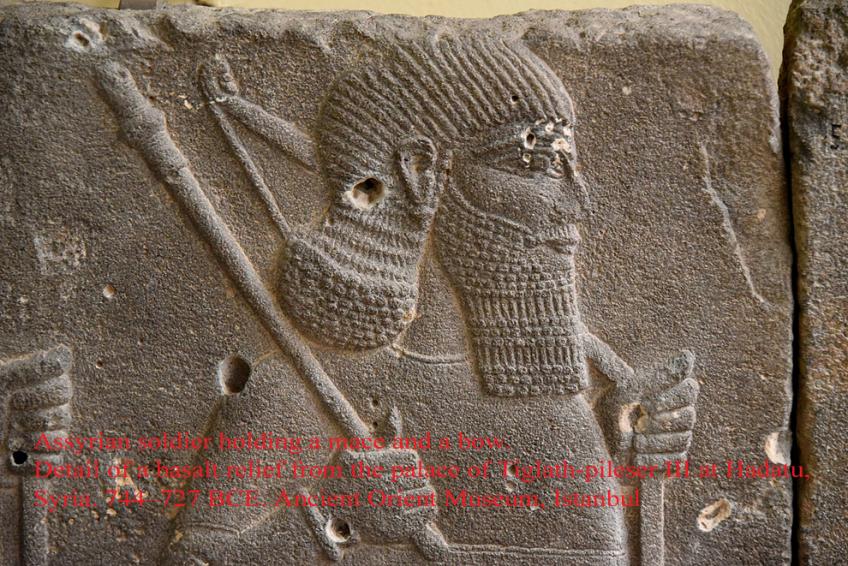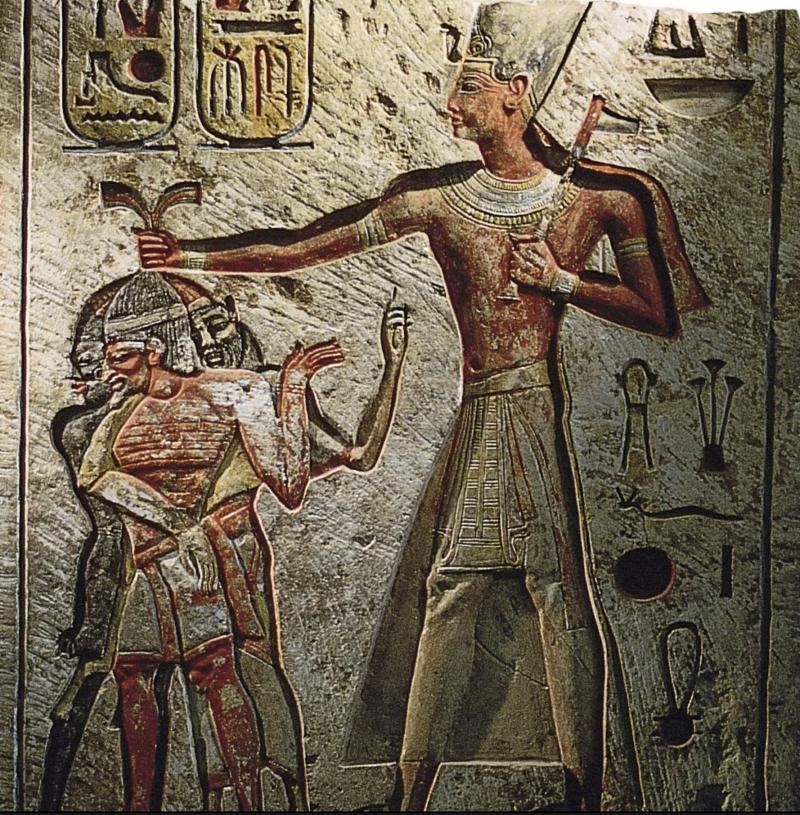A Fabulous Royal Bronze Battle Mace From 2,500 to 3,200 Years Old. From the Era of Rameses the Great of Egypt, to Darius, King of Kings of the Achaemenid Empire. As Used By The Shardanas Warriors from Sardinia Who Fought for Rameses II Against the Hittite
13th-6th century BC. This is a classic style royal baton mace head of the ancient Bronze Age culture. Examples of this mace can be seen in several of the world's finest ancient Near Eastern bronze collections. The shaft is elaborately decorated with raised striking knobs of a herringbone design. This was an effective striking weapon likely used by high-ranking soldiers or royal subjects due to its extremely decorative design. In battle, maces like this were often used by commanders to display rank when giving orders in battle and leading soldiers, inspiring leadership and power. A substantial bronze cudgel and mace with tubular body, ribbed collar, flared rim and panels of raised herringbone ornament. Ist to 2nd Millennium B.C. In use it would have slotted onto a wooden haft. Items such as this were oft acquired in the 18th century by British noblemen touring the Middle East, Northern France and Italy on their Grand Tour. Originally placed on display in the family 'cabinet of curiosities', within his country house upon his return home. A popular pastime in the 18th and 19th century, comprised of English ladies and gentlemen traveling for many months, or even years, throughout classical Europe, and the Middle East, acquiring antiquities and antiques for their private collections. The use of the stone headed mace as a weapon and a symbol od status and ceremony goes back to the Upper Palaeolithic stone age, but an important, later development in mace heads was the use of metal for their composition. With the advent of copper mace heads, they no longer shattered and a better fit could be made to the wooden club by giving the eye of the mace head the shape of a cone and using a tapered handle.
Ramesses the Great, was the third pharaoh of the Nineteenth Dynasty of Egypt. Along with Thutmose III he is often regarded as the greatest, most celebrated, and most powerful pharaoh of the New Kingdom, itself the most powerful period of Ancient Egypt.
The Shardanas or warriors from Sardinia who fought for Ramses II against the Hittities were armed with maces, exactly as this fabulous example, consisting of rounded wooden hafts with the bronze mace heads slotted upon the hafts. Many bronze statuettes of the times show Sardinian warriors carrying swords, bows and original maces.
Darius the Great, was a Persian ruler who served as the third King of Kings of the Achaemenid Empire, reigning from 522 BCE until his death in 486 BCE. He ruled the empire at its territorial peak, when it included much of Western Asia, parts of the Balkans (Thrace–Macedonia and Paeonia) and the Caucasus, most of the Black Sea's coastal regions, Central Asia, the Indus Valley in the far east, and portions of North Africa and Northeast Africa including Egypt (Mudrâya), eastern Libya, and coastal Sudan.
Darius ascended the throne by overthrowing the legitimate Achaemenid monarch Bardiya, whom he later fabricated to be an imposter named Gaumata. The new king met with rebellions throughout his kingdom and quelled them each time; a major event in Darius' life was his expedition to subjugate Greece and punish Athens and Eretria for their participation in the Ionian Revolt. Although his campaign ultimately resulted in failure at the Battle of Marathon, he succeeded in the re-subjugation of Thrace and expanded the Achaemenid Empire through his conquests of Macedon, the Cyclades and the island of Naxos as well as the sacked Greek city of Eretria.
Persians used a variety of maces and fielded large numbers of heavily armoured and armed cavalry (cataphracts). For a heavily armed Persian knight, a mace was as effective as a sword or battle axe. In fact, Shahnameh has many references to heavily armoured knights facing each other using maces, axes, and swords. The enchanted talking mace Sharur made its first appearance in Sumerian/Akkadian mythology during the epic of Ninurta. Roman though auxiliaries from Syria Palestina were armed with clubs and maces at the battles of Immae and Emesa in 272 AD. They proved highly effective against the heavily armoured horsemen of Palmyra. Photos in the gallery of original carvings from antiquity in the British Museum etc.; Ashurbanipal at the Battle of Til-Tuba, Assyrian Art / British Museum, London/ 650-620 BC/ Limestone,, An Assyrian soldier waving a mace escorts four prisoners, who carry their possessions in sacks over their shoulders. Their clothes and their turbans, rising to a slight point which flops backwards, are typical of the area; people from the Biblical kingdom of Israel, shown on other sculptures, wear the same dress, on a gypsum wall panel relief, South West Palace, Nimrud, Kalhu Iraq, neo-assyrian, 730BC-727BC.
A recovered tablet from Egypt's Early Dynastic Period (3150-2613 BC) shows a Pharaoh smiting his foe with a war mace. Part of an original collection we have just acquired, of antiquities, Roman, Greek, Middle Eastern, Viking and early British relics of warfare from ancient battle sites recovered up to and around 220 years ago.
Last picture in the gallery; Ramses II A larger-than-life Ramses II towering over his prisoners and clutching them by the hair. Limestone bas-relief from Memphis, Egypt, 1290–24 BCE; in the Egyptian Museum, Cairo
As with all our items it comes complete with our certificate of authenticity.
This wonderful piece would have been made and traded throughout the Western Asiatic region. 551 grams, 24cm (9 1/4").
Code: 23421
1750.00 GBP

